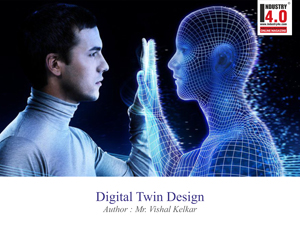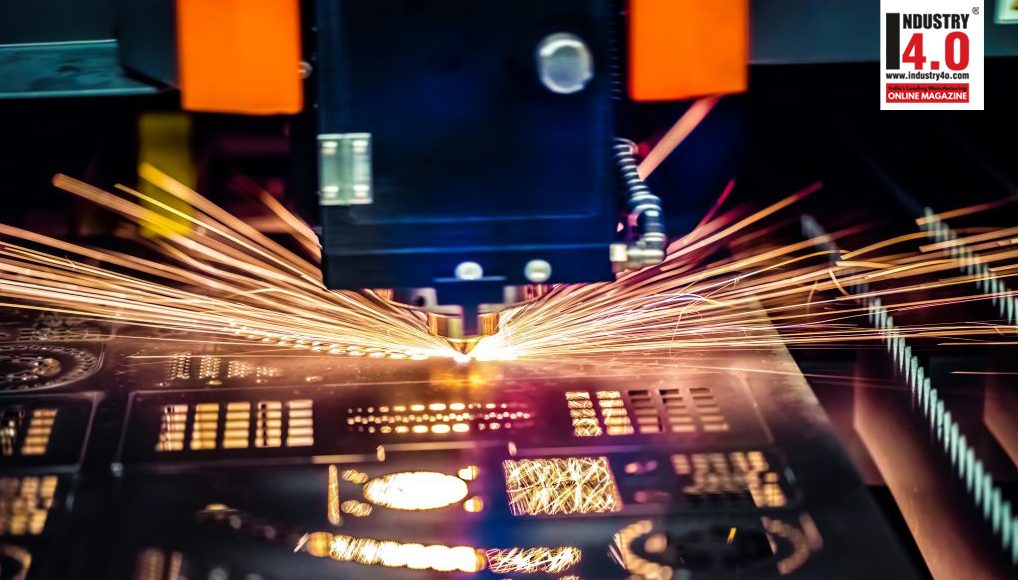Embracing Additive Manufacturing for Competitive
Advantage – A Strategic Approach
Introduction
From the days of steam powered systems to today’s intelligent systems – manufacturing has evolved by leaps and bounds.
Primarily, manufacturing has been about converting raw materials into desired shapes and sizes that are final products or components for larger, more complex products. The traditional subtractive process involves transforming blank workpieces of metals and alloys through a series of machining processes that ‘subtract’ or remove material to attain the desired dimensions. The machined object is further treated chemically, thermally or other ways as per customer’s requirements.
 ‘Additive’ manufacturing (AM) on the contrary, does exactly the opposite by layering pulverised metals and plastic crystals and fusing them together into the desired shape. Such an approach was unthinkable few years ago but with technological innovation it is gaining a position in the mainstream. Although, some post-processing might be required for objects produced through additive route.
‘Additive’ manufacturing (AM) on the contrary, does exactly the opposite by layering pulverised metals and plastic crystals and fusing them together into the desired shape. Such an approach was unthinkable few years ago but with technological innovation it is gaining a position in the mainstream. Although, some post-processing might be required for objects produced through additive route.
I will address the important aspects of additive manufacturing approach and important points that need to be taken into consideration while assessing the technology. The article is broadly divided into two sections: The technology behind additive manufacturing and a taking a strategic view on how it can add value to your organization.
Fundamental View
Let’s understand the fundamental approaches that can be taken for an additive manufacturing process. The common basis is to build a physical product layer by layer in a controlled environment. It can be accomplished by the following techniques. Different technologies that fall under these main categories are detailed later in the article.
Material Extrusion
The raw material heated to its melting point and extruded or pushed through a nozzle under controlled pressure and is deposited to build up a 3D object layer by layer. It has higher material deposit rates than other techniques. It is like putting icing on the cake using a cone.
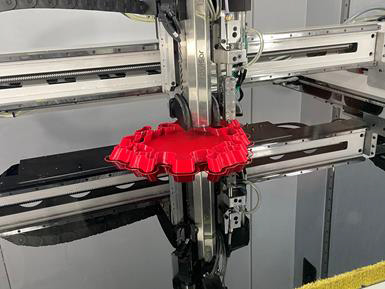
Powder Bed Fusion
Selectively sintering (heating without melting) and melting of fine material particles (metal or thermoplastic) and fuse them together layer by layer.
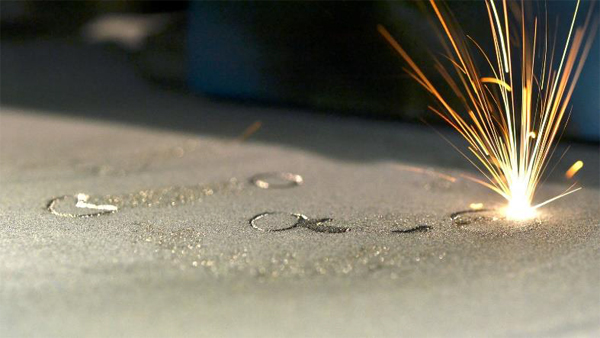
Digital Light Processing (DLP)
It uses a process called Photopolymerization in which an ultraviolet laser cures liquid resin into solid form layer by layer. The projector displays a pattern of light onto the surface of the resin, which is then solidified by the light’s energy. The process repeats layer by layer, building up the object until it is complete.
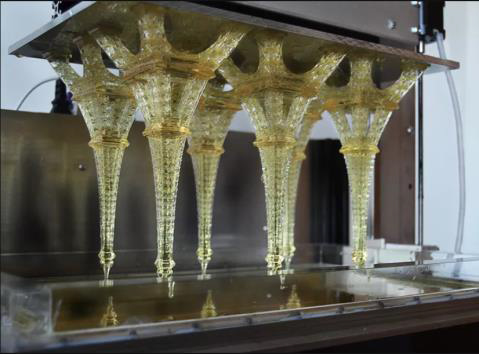
Material Jetting
Material jetting creates objects similar to a two-dimensional ink jet printer. Raw material (typically photopolymer resin) is loaded into a cartridge and its droplets are jetted onto a build platform layer by layer using either a continuous or Drop on Demand (DOD) approach. It often requires the use of a support structure to hold up the overhanging sections of the object during the printing process. After the print is complete, the object is typically washed in a solvent to remove any excess resin and then cured in UV light to fully harden the resin.

Binder Jetting
It is similar to powder-based sintering but instead of using laser, binder jetting creates objects by depositing a binder material onto a layer of powder, which then binds the particles together to form a solid object. The process is repeated layer by layer until the entire object is built. Once the object is complete, it is typically baked in an oven or subjected to heat and pressure to fully cure the binder and solidify the object.
Sheet Lamination
It’s a technique to build objects by stacking and bonding thin layers of material that are cut to the desired shape and bonded together by using different methods like heat, adhesive, pressure or a combination of all these and including other additive techniques.
Additive Manufacturing Process
All this looks exciting but how exactly it works? A solid 3D CAD model of the component is the design reference for all additive processes and serves as the starting point. The 3D printer needs to be instructed what it needs to build and how.
There are several considerations to be made at this stage and this is where a specialised software, also called as slicer software steps in. Slicer software takes this design as an input and creates or slices the object design into several solid layers. Before slicing, the operator also decides the axis along which the printing has to be done to ensure process efficiency and structural integrity of the printed part.
The software defines the toolpath for printing head and uses different starting point for printing each layer to avoid imperfections to build up as they are added on top of each other.
It converts the instructions in G-Code (a programming language understood by CNC based machines) and sends it to the 3D printer which then executes the instructions to build the object.
There are variety of technologies available for each methodology that I have explained above. For a deep dive, refer to the last section (Additive Manufacturing Technology Landscape) in this article.
Materials
So, what all materials can I use to manufacture in an additive way? With the advancements in material applications there are several of them that can be used. Metals and thermoplastics are the most widely used:
- Metals – A wide variety of metals and alloys like stainless steels, Titanium, Aluminium and Inconel alloys are used.
- Thermoplastics – Thermoplastic polymers include acrylonitrile butadiene styrene (ABS), polylactic acid (PLA) and polycarbonate (PC) as well as water soluble polyvinyl alcohol (PVA) which can provide temporary support before being dissolved.
- Ceramics – Alumina, tricalcium phosphate and zirconia as well as powdered glass is used that can be baked together with adhesives to create new types of ceramics.
- Biochemicals – Its an entirely new category introduced for health care applications. It includes Silicon, Calcium Phosphate and Zinc. Bio-inks fabricated from stem cells are also being explored to be used as a raw material.
Materials are used in different forms like powder, pallets, filament/wire, vat/liquid and sheet/ribbon.
Benefits of Additive Manufacturing
The additive technique offers several benefits but the most prominent one is the ability to customize individual product as per customer’s specific requirements. This uniqueness finds application in many use cases in medical implants, prototyping and bespoke product development. Following prominent benefits can be derived from additive manufacturing:
Accelerated Prototyping
Product development can be expedited by rapidly printing multiple prototypes of a design to check how the final product would look in real form before it can be pushed to production. Any design flaws at the prototyping stage can be quickly identified, fixed and reprinted to avoid costly failures down the production line.
Flexibility in Customization
Products can be easily customized for end users and can be produced at scale. The traditional method of introducing changes in design is pretty complex and requires an incremental change across the product lifecycle. But when products are manufactured with additive technique, the changes can be introduced at a later point and incorporated in the design. Such level of flexibility is priceless when mass customization of a product is desirable. It provides production feasibility of light weight designs involving complex geometries.
Efficient Production
When a product is being built layer by layer from nothing, then it brings positive cascading effects to other aspects of production, like leaner inventory of finished goods, optimized energy spent only on additive process and not on removing material to get to the final shape and minimal wastage as one can control the flow of material into desired shape. One major advantage is that of supporting legacy parts. It enables the manufacturer to extend its support deep into the past as digital drawings can be printed on demand. Efficiency in production also directly supports the environment.
Challenges
Why additive technique hasn’t swept the shop floors like a storm yet? Its adaptation is not as easy as it seems. The future looks bright but currently there are multiple challenges that need to be addressed.
High Initial Investment
Additive manufacturing is a sophisticated technique and has been in existence only for few years. Everything related to it, the hardware, specialised software, operator skills, material handling etc. is very expensive as compared to the conventional methods and eventually adds to the production cost. The initial investment can be substantial and only businesses with deep pockets can commit to it for now.
Material Dynamics
As mentioned in earlier part, the raw material is additionally processed to suit the additive process. The granule/pallet size may differ as per the application and machine specification. alloy materials in a base powder. The mechanical properties of a finished product are entirely dependent upon the characteristics of the powder used in the process. Also, there has to be enough demand for such special materials for suppliers to start producing it. Then comes the whole supply chain aspect that needs to be taken into consideration for assuring an uninterrupted supply.
Slow Speed
The best additive equipment can develop components only till a certain rate and struggles to match the speed and accuracy of a CNC machine that works on the principle of subtractive manufacturing, that is removing waste material to reach the desired shape. It doesn’t matter at the prototyping stage but on a production line Takt Time is the king and needs to be honoured to meet customer demand.
Post-Processing
As you must have seen in earlier sections that additive technique does not produce a finished part. There is a bit of post processing required whether it is curing in ovens, alcohol bath for cleaning resin/powder residue or even finishing runs on a CNC machine to achieve the high level of accuracy. This stage adds times and cost in terms of efforts and resources.
Build Quality
At the microscopic level, 3D printing processes can introduce lower fatigue (initiation and propagation of cracks) that can make it less reliable than its conventional counterparts. It also depends upon which process has been used to produce the part. For example, metal extrusion offers higher fatigue resistance as compared to sintered ones. Imperfections introduced at micro level during the process allow the cracks to grow over time. The printing process may also introduce porosity that lowers the resistance. To counter it, high density materials are used and post processing like hot isostatic pressing is used to close the pores.
Deriving Value from Additive Manufacturing
Now that we have a decent idea about how the technology works, what are the different methods to produce parts and where they can find an applicability, the key question of how to evaluate needs to be answered.
I will suggest to take a strategic view followed by an operational view on how to go about it. It’s a trickle down approach that will address all aspects of additive manufacturing and whether it suits your organization to walk on that path.
Let’s talk about the strategic view first as this will decide whether subsequent assessment is worth it or not. Additive manufacturing has gained a lot of prominence in recent times and even claims to disrupt the conventional manufacturing methods in a big way. But how far are we from that Big Bang and how it might or might not impact you? Strategizing is a fine balancing act by evaluating and managing trade-offs like capital expenditure, durability, precision, geometric complexity, material availability and operational expenditure. It has to be done by every manufacturer given its uniqueness.
To start with, figure out the long-term relevance of embracing additive technology for your organization. Identify the competitive advantage you will gain by including it in your existing manufacturing processes. I recommend the following decision-making framework that will provide a holistic picture of your manufacturing landscape and help to spot opportunities. This is not the only way to do it and there can be other approaches that you deem best fit for your organization.
Identify complete portfolio – List down existing processes of the product portfolio, from product ideation, design, development, manufacturing to future product strategy. It should include each discrete step that can be evaluated. The idea is to have complete visibility of the manufacturing ecosystem so that it can be referenced when you move to the next step of evaluating additive technologies.
Additive technology evaluation – This is a critical step that will determine the final approach that needs to be taken. How things will change if you introduce additive technology at each step in the ecosystem? Would it help to deliver a superior product? Would it be complementary to the existing process or substantial changes need to be made? What kind of design possibilities it will open and if it will have a sustained demand pull as a result? If these answers are in affirmative then the next step is to identify the right additive technology for the operation and also an alternative. For example, a given operation can be best done by DED and also by SLS. Choose both as first and second option. This will be required when you consolidate technology selection at the ecosystem level.
Economic and operational considerations – Now that you have identified which AM technologies are best suitable for your requirements along with a capable alternative, the next step is to figure out how this is going to work financially and operationally. You can consider the following aspects in the decision-making framework. The weightages assigned to these aspects would depend upon your organizational strategy and needs a deep dive assessment with top leadership. It is out of scope for this article.
Select the technology that is identified at maximum steps across processes in the evaluation exercise. It will help to amortize the investments faster as maximum processes can re-use the same asset.
For every technology that is selected, calculate the Total Cost of Ownership (TCO). It will include the initial cost of hardware, operator training, software licenses and operational cost of raw material and additional machines like curing ovens and consumables used in post-processing. Evaluate if the TCO justifies the benefits earned in terms of product superiority, cost efficiency, market/value share.
Consider the maximum throughput that can be achieved by utilizing the cabin size/printing area and volume density to print several parts at once. How much volume would be produced and does the cost structure justify it?
Evaluate post-processing required after the objects are printed. It will add to the production cost in terms of inputs and efforts. Consider common factors (like alcohol wash in case of Vat polymerization, support structure removal and finishing, machining for finishing stages).
Supply chain dynamics – Deep understanding of supply chain and market dynamics is essential to evaluate the sustainability of above model. Analyse how easy or difficult it is to source the specialised raw material required for the AM process and if there is enough capacity and suppliers available in the market. Pay attention in situations where the supply is dominated by handful of players, high volatility in raw material prices, potential environmental impact and exposure to geopolitical risks if any. Prepare a sourcing strategy by managing these risks to ensure uninterrupted supplies and invest in inventory holding if such a situation is unavoidable.
Conclusion
Additive manufacturing technologies showcase great scientific accomplishment and promise a disruption in the manufacturing world. Major players across sectors have successfully adopted AM to create components with complex geometries that were difficult to manufacture using traditional methods. Some of the popular examples are:
- GE Aviation and Boeing have been using 3D printing to produce complex engine components, such as fuel nozzles and turbine blades.
- Customized prosthetics, implants, and surgical tools by healthcare companies. Oxford Performance Materials and EOS have been using 3D printing to produce spinal implants that are customized to fit each patient’s specific anatomy.
- Consumer goods companies like Hasbro and Philips have been using 3D printing to produce prototypes, molds, and small-batch production runs of their products.
However, we are in early days of evolution and technology will keep maturing as the time progresses. Given the variety of options available as per their applicability and other factors, the decision-making framework suggested above can identify the right fit for your organization to achieve product excellence.
What do you think, are you ready to evaluate and embrace additive manufacturing technologies?
Additive Manufacturing Technology Landscape
Let’s do a deep dive into the different technologies available, salient features, application and challenges.
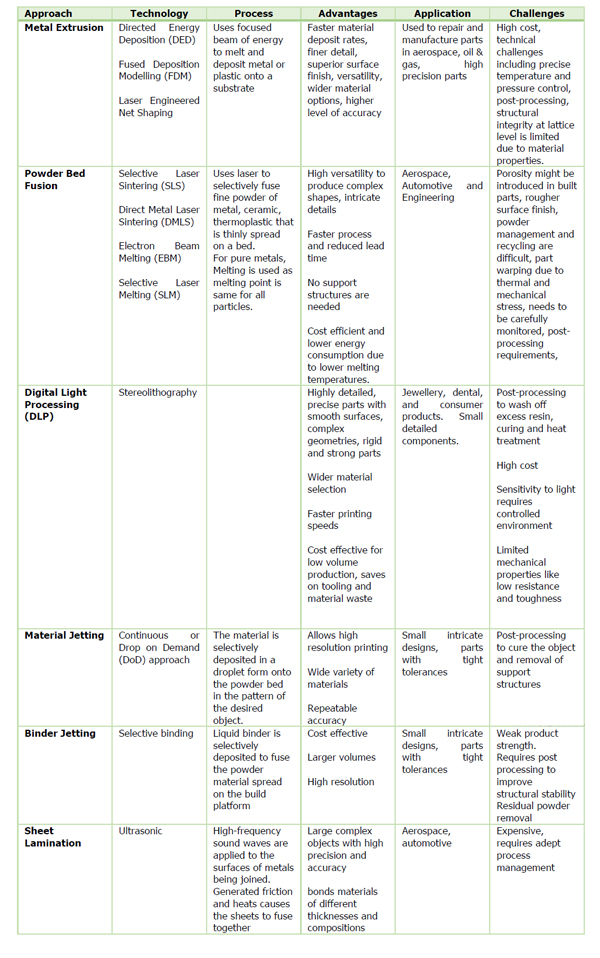
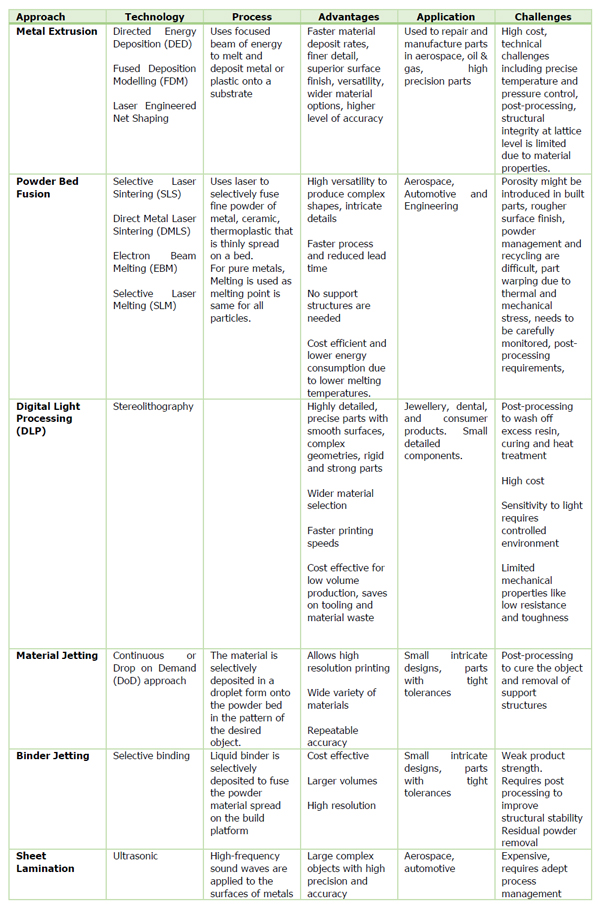
About the Author :

Mr. Vishal Kelkar
Senior Product Strategist – FIS
Vishal Kelkar is a certified digital manufacturing and smart factories specialist from Indian Institute of Science (IISc), Bengaluru, India. He has 22+ years of business consulting experience and has extensively worked in the areas of product strategy and management, business solutions consulting and industry thought leadership. He has authored business articles, whitepapers and point of views published across industry magazines and blogs.
Mr. Vishal Kelkar is Bestowed with the following Licenses & Certifications :
https://www.linkedin.com/in/vi
Mr. Vishal Kelkar can be contacted at :
Also read Mr. Vishal Kelkar earlier article :
